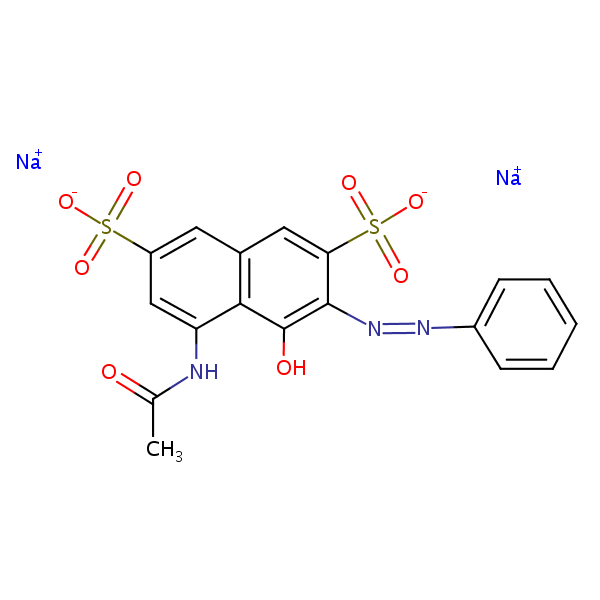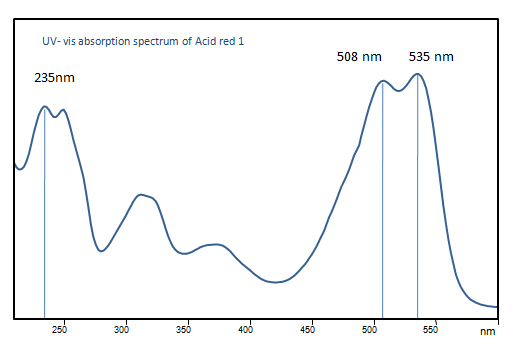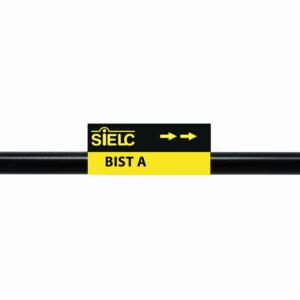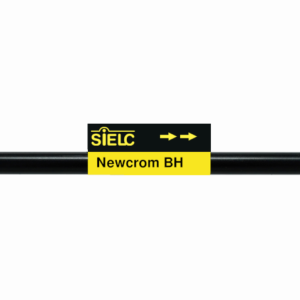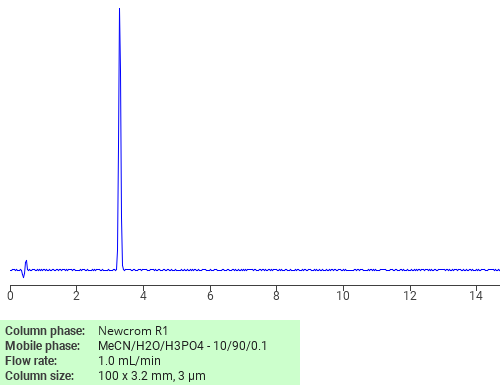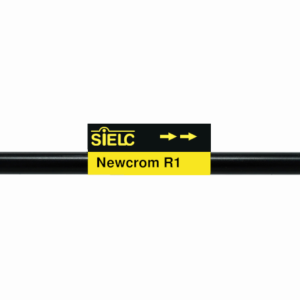| CAS Number | 3734-67-6 |
|---|---|
| Molecular Formula | C18H13N3Na2O8S2 |
| Molecular Weight | 509.411 |
| InChI Key | WXLFIFHRGFOVCD-UHFFFAOYSA-L |
| LogP | -0.277 |
| Synonyms |
|
Applications:
HPLC Method for Analysis of Acid Red 1 on BIST A Column
December 1, 2022
Separation type: Bridge Ion Separation Technology, or BIST™ by SIELC Technologies
HPLC Method for Analysis of Acid Red 1 on BIST A Column by SIELC Technologies
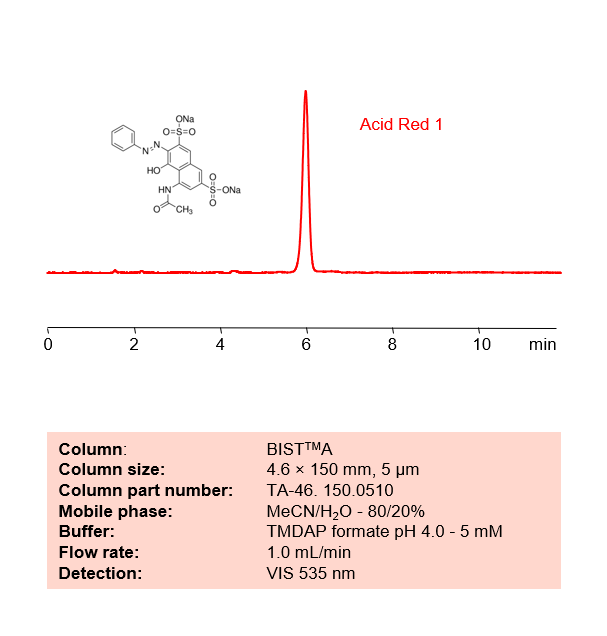
High Performance Liquid Chromatography (HPLC) Method for Acid Red 1
Acid Red 1 is a popular red synthetic dye used in a wide variety of food products. Using SIELC’s newly introduced BIST™ method, Acid Red 1, which ionizes in water, can be retained on a negatively-charged, cation-exchange BIST™ A column. There are two keys to this retention method: 1) a multi-charged, positive buffer, such as N,N,N’,N’-Tetramethyl-1,3-propanediamine (TMDAP), which acts as a bridge, linking the negatively-charged Acid Red 1 analytes to the negatively-charged column surface and 2) a mobile phase consisting mostly of organic solvent (such as MeCN) to minimize the formation of a solvation layer around the charged analytes. The effect of reducing the solvation layer by increasing the organic component concentration in the mobile phase can be clearly seen above. Using this new and unique analysis method, Acid Red 1 can be retained and UV detected at 270 nm.
Condition
| Column | BIST™ A, 4.6×150 mm, 5 µm, 100A |
| Mobile Phase | MeCN – 80/20% |
| Buffer | TMDAP formate pH 4.0 – 5,0 mM |
| Flow Rate | 1.0 ml/min |
| Detection | Vis 535 nm |
Description
| Class of Compounds | Acid, Dye |
| Analyzing Compounds | Acid Red 1 |
Application Column
BIST A
BIST™ columns offer a unique and effective way to achieve separations that were traditionally challenging or even impossible with other HPLC columns. With the use of a special mobile phase, these ion exchange columns provide very strong retention for analytes with the same charge polarity as the stationary phase, unlocking new chromatography applications. What makes BIST™ columns stand out is their proprietary surface chemistry, which results in superior selectivity, resolution, and sensitivity. These columns offer a simple, efficient solution for a variety of analytical challenges, making them an excellent choice for researchers and analysts across many different fields. To learn more about the technology that powers BIST™ columns and to explore related applications, check out https://BIST.LC.
Select options
HPLC Determination of Acid red 1 on Newcrom BH Column
July 2, 2020
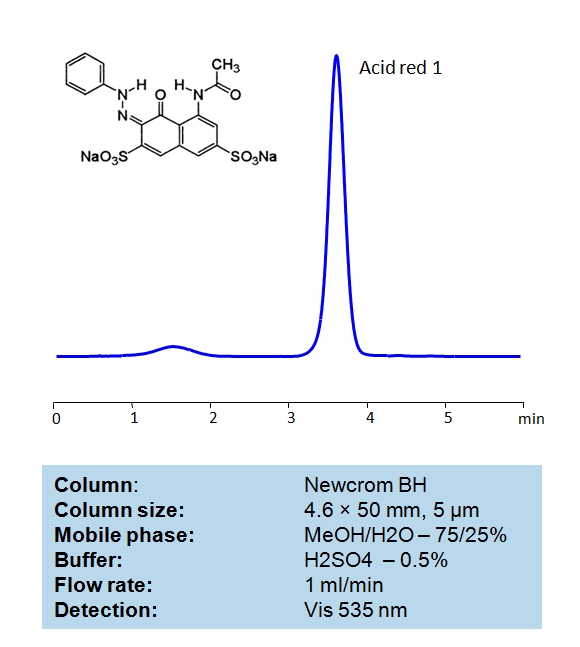
Acid Red 1, also known as Red 2G, is a synthetic dye that’s used as a food additive. It has been banned in several countries due to safety concerns because it forms aniline in the body that can interfere with the function of hemoglobin. Acid Red 1 can be retained on HPLC mixed-mode Newcrom BH column using a mobile phase consisting of methanol (MeOH) and water with sulfuric acid (H2SO) buffer. Vis detection at 535nm.
| Column | Newcom BH, 4.6×50 mm, 5 µm, 100A |
| Mobile Phase | MeOH/H2O – 75/25% |
| Buffer | H2SO4 – 0.5% |
| Flow Rate | 1.0 ml/min |
| Detection | Vis 535 nm |
| Class of Compounds | Acid, Dyes |
| Analyzing Compounds | Acid red 1 |
Application Column
Newcrom BH
The Newcrom columns are a family of reverse-phase-based columns. Newcrom A, AH, B, and BH are all mixed-mode columns with either positive or negative ion-pairing groups attached to either short (25 Å) or long (100 Å) ligand chains. Newcrom R1 is a special reverse-phase column with low silanol activity.
Select options
Separation of C.I. Acid Red 1 on Newcrom R1 HPLC column
May 16, 2018
C.I. Acid Red 1 can be analyzed by this reverse phase (RP) HPLC method with simple conditions. The mobile phase contains an acetonitrile (MeCN), water, and phosphoric acid. For Mass-Spec (MS) compatible applications the phosphoric acid needs to be replaced with formic acid. Smaller 3 µm particles columns available for fast UPLC applications. This liquid chromatography method is scalable and can be used for isolation impurities in preparative separation. It also suitable for pharmacokinetics.
Application Column
Newcrom R1
The Newcrom columns are a family of reverse-phase-based columns. Newcrom A, AH, B, and BH are all mixed-mode columns with either positive or negative ion-pairing groups attached to either short (25 Å) or long (100 Å) ligand chains. Newcrom R1 is a special reverse-phase column with low silanol activity.
Select options